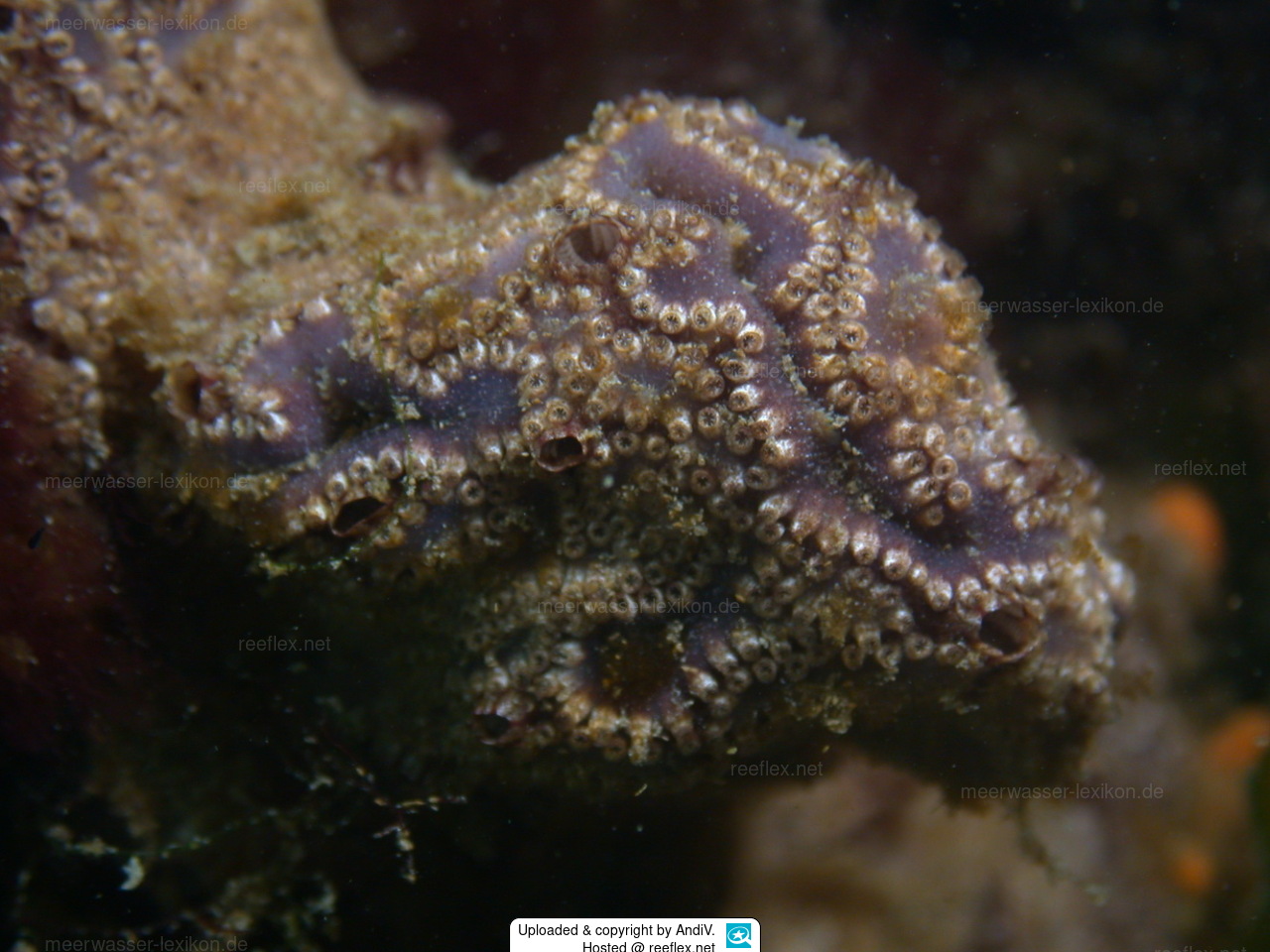Info
(Herdman, 1886)
This colonial sea squirt is found in tropical and subtropical waters at depths of 1-170 meters.
It settles on mangrove roots, rocks, and man-made structures such as bollards in docks.
The color of a colony is highly variable, ranging from pink to green, to blue and to red.
The sea squirt is capable of completely overgrowing living algae and other sessile benthic life.
In the U.S., this species was first found in 1997 at the Naval Station in San Diego Bay, California; sea squirts now occur near Los Angeles, San Diego, Mission Bay, and Alamitos Bay.
Invasive species:
Larvae develop rapidly (in less than 3 hours), making transport of adult colonies on boat hulls and aquaculture facilities the most likely cause of introduction.
Synonyms:
Botrylloides perspicuum Herdman, 1886
Botryllus perspicuus (Herdman, 1886)
This colonial sea squirt is found in tropical and subtropical waters at depths of 1-170 meters.
It settles on mangrove roots, rocks, and man-made structures such as bollards in docks.
The color of a colony is highly variable, ranging from pink to green, to blue and to red.
The sea squirt is capable of completely overgrowing living algae and other sessile benthic life.
In the U.S., this species was first found in 1997 at the Naval Station in San Diego Bay, California; sea squirts now occur near Los Angeles, San Diego, Mission Bay, and Alamitos Bay.
Invasive species:
Larvae develop rapidly (in less than 3 hours), making transport of adult colonies on boat hulls and aquaculture facilities the most likely cause of introduction.
Synonyms:
Botrylloides perspicuum Herdman, 1886
Botryllus perspicuus (Herdman, 1886)







 AndiV
AndiV











